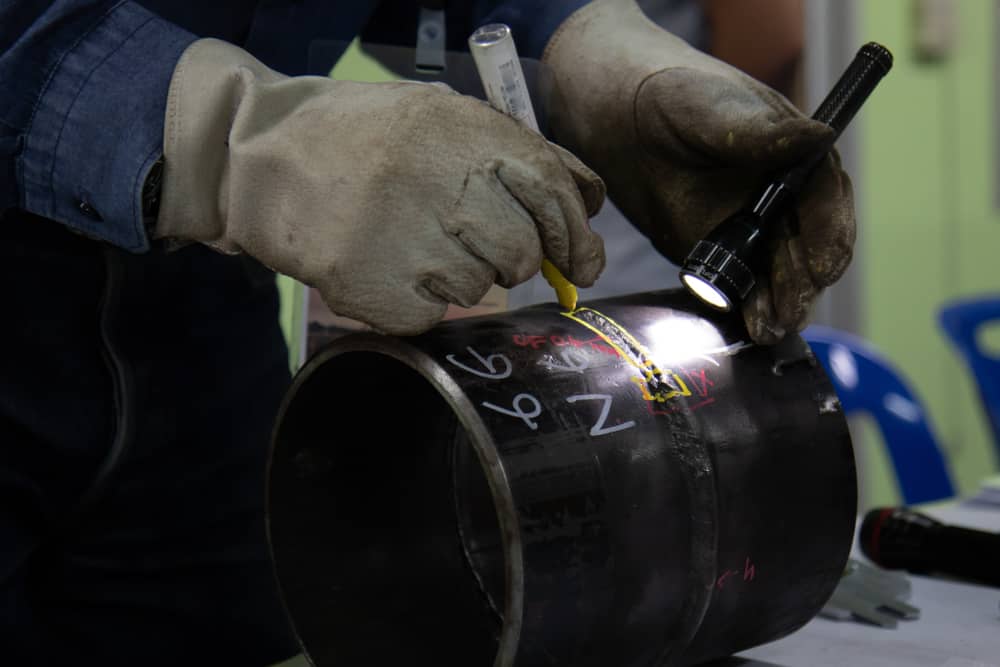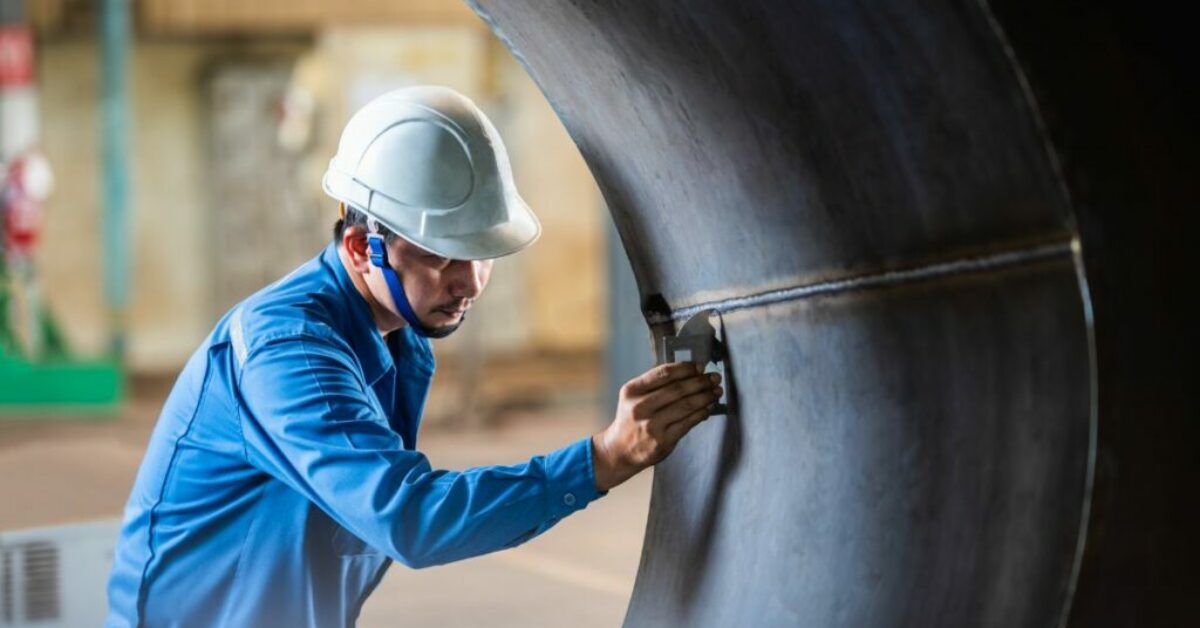Why Hire Expert Welding Inspection Milwaukee for Your Jobs?
Wiki Article
A Thorough Checklist for Effective Welding Examination Practices
In the world of welding, the honesty of frameworks is vital, demanding an extensive strategy to inspection practices. A detailed list acts as a crucial tool in making certain adherence to industry criteria, incorporating crucial pre-welding, in-process, and post-welding examinations. By methodically dealing with product verification, weld quality, and complete documents, companies can considerably enhance security and efficiency. Nonetheless, what specific elements should be prioritized in each phase to attain optimum outcomes? Discovering these important components can generate insights that profoundly influence welding operations.Understanding Welding Criteria
Welding criteria play a critical role in guaranteeing the quality and security of welded frameworks and parts. These requirements establish the requirements for products, treatments, testing, and inspection, consequently providing a structure for constant top quality guarantee in welding processes. Numerous companies, consisting of the American Welding Culture (AWS), the International Organization for Standardization (ISO), and the American Culture of Mechanical Designers (ASME), have developed thorough standards that regulate various elements of welding.Recognizing welding standards is necessary for professionals in the area, as adherence to these standards lessens the risk of issues and failings in bonded joints. These requirements cover specific demands for weld high quality, consisting of appropriate resistances, the kind of welding strategies to be used, and the qualifications required for welders and inspectors.

Pre-Welding Examination Actions
Prior to any type of welding process commences, a detailed pre-welding examination is important to identify possible issues that might jeopardize the top quality of the weld. This initial step works as an essential structure for ensuring conformity with appropriate welding codes and requirements.The primary step in the pre-welding examination is to verify the products being used. This consists of checking for the appropriate type and quality of steels as defined in the task documents. Next off, it is critical to evaluate the fit-up of the parts to guarantee appropriate positioning and joint configuration. Misalignment can lead to insufficient infiltration and architectural weak points.
In addition, evaluating the tidiness of the surface areas is crucial; contaminants such as oil, corrosion, or paint can detrimentally influence the high quality of the weld. Following this, a complete assessment of the welding devices should be conducted, guaranteeing that it is calibrated and in great functioning condition.
Lastly, examining the certifications of the welding employees is crucial. Welders have to possess the required accreditations and experience to carry out the details welds needed for the job. By adhering to these pre-welding assessment steps, the chance of problems and failures in the final weld can be substantially minimized.

In-Process Evaluation Techniques
In-process examination methods play a crucial role in making sure the stability and quality of welds as they are being executed. These techniques permit assessors to recognize flaws or deviations from requirements in actual time, thereby guaranteeing and preventing expensive repairs adherence to layout demands.One trick technique entails visual assessment, where examiners analyze the weld bead for harmony, penetration, and proper profile. This can be complemented by the use evaluates to gauge weld dimensions, making certain compliance with established resistances. Additionally, the application of non-destructive testing (NDT) approaches, such as ultrasonic testing or magnetic bit testing, throughout the welding procedure can disclose subsurface problems that may not be visible externally.
An additional essential facet is monitoring welding criteria, including voltage, amperage, and travel rate. Uniformity in these specifications is critical for accomplishing optimal weld high quality. Documenting these specifications throughout the welding procedure supplies a deducible record for future reference.
Educating personnel in correct evaluation strategies and making use of ideal tools improves the performance of in-process assessments. By integrating these methods, organizations can achieve higher high quality welds, minimize rework, and eventually make certain the safety and security and reliability of bonded structures.
Post-Welding Quality Checks
Following the conclusion of welding operations, post-welding quality checks are crucial to validate that the welds satisfy all specified requirements and standards. These checks are necessary for guaranteeing the integrity and toughness of the welded joints. The evaluation process commonly begins with a visual examination, examining for surface flaws such as fractures, porosity, or incomplete blend.Consequently, non-destructive testing (NDT) methods, such as ultrasonic screening, radiographic testing, or magnetic bit testing, may be used to detect interior flaws that are not noticeable to the nude eye. Each method has its special benefits and is picked based on the weld's area, product kind, and the nature of the application.
Furthermore, verifying dimensional precision is an essential aspect of post-welding quality checks. This entails gauging the weld's alignment, account, and dimension to ensure conformity with design requirements. Examining the mechanical residential properties of the weld, consisting of tensile strength and ductility, can supply more guarantee of efficiency under operational problems. In general, comprehensive post-welding evaluations are vital for maintaining safety and security, performance, and adherence to regulatory and sector criteria.
Documents and Reporting
Just how can efficient documents and reporting improve the welding inspection procedure? Accurate paperwork and comprehensive reporting are essential elements that Website make certain the stability and top quality of welding operations. Welding Inspection Milwaukee. They work as an official record of examination findings, assisting in accountability and traceability in compliance with sector standards
A well-structured coverage system allows examiners to clearly interact any type of non-conformances, locations, or inconsistencies calling for improvement. This transparency fosters an environment of continual improvement, as stakeholders can easily evaluate past performance and apply restorative activities.
Additionally, effective documents includes thorough documents such as welding procedure requirements (WPS), welder credentials, and evaluation checklists. These components supply a structure for examining weld high quality and adherence to established standards. In case of disagreements or high quality concerns, comprehensive documents acts as a trusted referral, minimizing obscurity and shielding all parties entailed.
Lastly, maintaining organized records helps in training and licensing workers, making certain that sector finest techniques are upheld. Ultimately, meticulous documents and reporting not just enhance the welding examination process but likewise add to the general safety and security and dependability of bonded structures.

Final Thought
In conclusion, an extensive list for efficient welding examination techniques is vital for guaranteeing quality and more safety and security in bonded structures. Adherence to developed welding standards, precise pre-welding examinations, extensive in-process examinations, and thorough post-welding high quality checks jointly contribute to the you can check here stability of bonded joints. Furthermore, persistent documentation and reporting of examination findings enhance responsibility and help with constant enhancement. Carrying out these techniques will significantly help in compliance with industry standards and inevitably promote a society of quality in welding procedures.Welding criteria play an important function in making sure the quality and safety and security of welded frameworks and components. Different organizations, consisting of the American Welding Culture (AWS), the International Organization for Standardization (ISO), and the American Culture of Mechanical Designers (ASME), have developed detailed standards that regulate various elements of welding.
Following the completion of welding procedures, post-welding top quality checks are essential to verify that the welds fulfill all specified criteria and demands - Welding Inspection Milwaukee.In verdict, a thorough list for efficient welding inspection practices is crucial for making sure high quality and safety in welded frameworks. Adherence to established welding requirements, meticulous pre-welding inspections, strenuous in-process examinations, and extensive post-welding top quality checks collectively contribute to the integrity of bonded joints
Report this wiki page